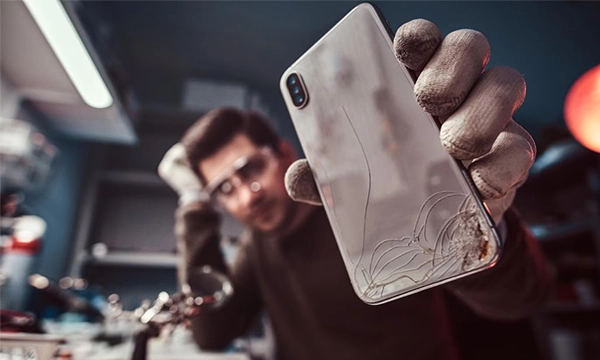
Have you ever considered how companies refurbish phones to ensure they are in the best condition for resale?
Pre-owned phone management can be a challenge whether you are a reseller, distributor, or working on a B2B project. Every device that goes through your inventory has some vital information that needs to be noted, such as its condition, functionality, and market value.
Evaluating all the devices individually makes a cumbersome process that is almost impossible to accomplish in a timely fashion. That’s where a pre-owned phone grading checklist can help you objectively assess every device in your inventory.
This way, a more accurate choice can be made quickly while improving inventory management and decision-making regarding refurbishment. With that said, let’s explore the recommended practices for managing pre-owned devices.
The external condition of a phone is what your customers first set eyes on; therefore, it plays a vital role in grading. Begin with inspecting the screen. Phones with absolutely no scratches or cracks are deemed perfect, with minimal returns to be expected.
Minor scratches are allowable, but these will reduce resale value. Additionally, phones with scratches can still function, but you can expect a lower price. So, it is advisable to repair it if it is shattered or cracked before selling.
Remember the back frame and cover—label tags or barcodes for monitoring scuffs or cracks, price accordingly, and discount anything to be repaired. Price the devices accordingly and offer discounts for items that need repairs.
By carefully monitoring the condition of each phone, you can adjust your pricing strategy to reflect its actual value based on its current state. To make the whole process more efficient, B2B inventory management software like NSYS Solutions allows you to monitor the physical status of all your devices, track repairs, and keep your grading consistent.
Functionality is also crucial in grading a phone. The initial step is to inspect the touchscreen and the buttons. If there are any sticky or non-responsive buttons, mark them for repair.
Test all the ports and speakers; check that the charging port is working and that the sound is coming through the speakers clearly. Any detected defects should be logged in your system for complete transparency.
You also need to check the camera to make sure that it is in good condition by testing its picture and zoom features. This ensures a fully functional device and helps prevent potential customer complaints down the line.
Connectivity issues are often a key concern for buyers, so to guarantee quality and reliability, the connectivity features of each phone, such as Wi-Fi, Bluetooth, and cell signal strength, must be tested.
Test that the phone can connect to networks and transmit data smoothly. Also, mark the phone for repair or lower the price if there is a connectivity issue. A good, thoroughly tested connection is essential from the aspect of customer satisfaction, and it will avoid complaints in the future.
Observing these attributes closely and making notes will ensure that you can provide phones that meet customers’ requirements for swift, top-quality performance.
Proper maintenance is crucial to ensure the phone receives a top grade. Begin with a factory reset and verify the operating system is at the latest version. This guarantees the final user a fresh start and allows you to ensure software integrity.
Test load time and program response to verify the performance speed. Any hitch or drag may impact its grade. So, use integrated automated testing software tools to test bugs and verify consistency before listing.
If the phone is not functioning efficiently or has software problems, it must be listed for repair or discounted sales. This avoids resale problems and keeps customers connected with their experience.
Every device categorically requires IMEI or serial number verification to determine whether it is legitimate. First, perform an IMEI check and ensure the phone is neither blocked nor stolen. Check the system using external IMEI verification tools built into your inventory system.
Second, the carrier compatibility of the phone must be tracked. Is it unlocked or locked to a particular carrier? This helps highlight certain device constraints to potential buyers so they do not have misconceptions.
Running proper IMEI and serial number verification enables you to stay away from selling defunct devices, which may hinder the trust of your customers. This increases confidence and reduces the risk of returns or disputes, enhancing your stature in the market.
Tracking the history of phone accidents is essential in determining repair requirements and price. Have repairs been documented in the system, particularly on major parts such as the motherboard or the screen?
Phones that have been properly repaired would be graded C or D, and their resale value would be less. Furthermore, having a proper repair record keeps customers informed about the phone’s condition.
It should also be checked for evidence of water damage or physical wear because these will develop problems in the future. With an open and transparent repair history, your business can accurately determine and disclose the device’s value fully, providing buyers with confidence and minimizing potential disputes.
Using this detailed phone grading checklist guarantees that all phones you resell are properly graded, open, and in resale condition. From outer condition to working condition, connectivity status, and software functionality, each step maximizes profit and reduces risks.
Effective inventory management lets you make informed, data-driven decisions and satisfy customers. These practices allow you to operate a more efficient, profitable, and customer-centric business.
